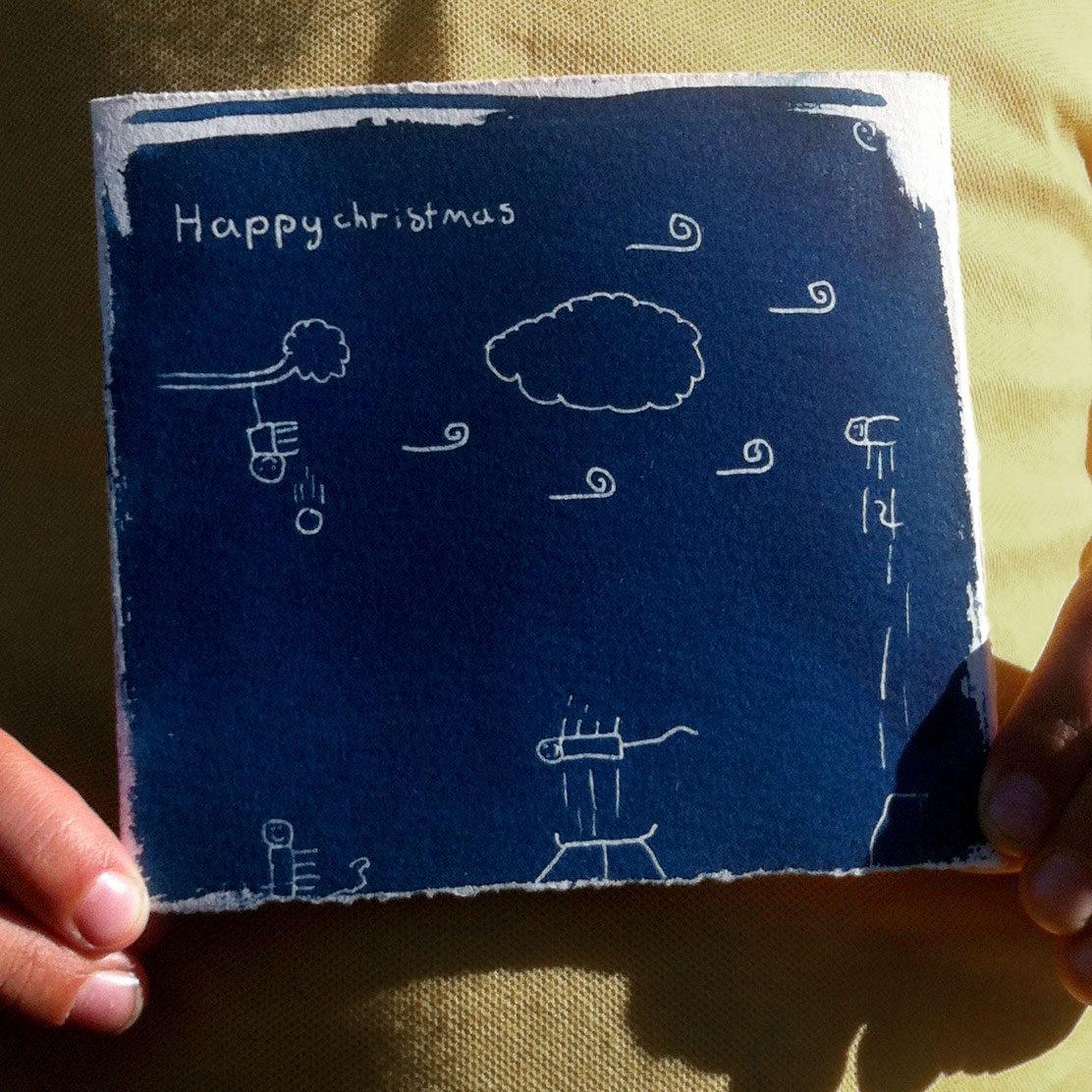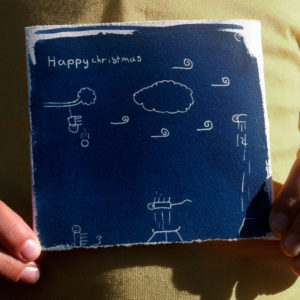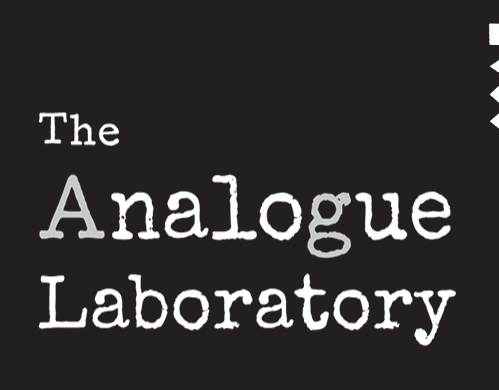
Whoa you guys really like Cyanotype!
So we’ve been running Cyanotype workshops at Bowerbird this weekend (November 26-27, 2016), we have our regular Cyanotype Sunday coming up next month (December 11), I’ve also run some little cyanotype workshops out at Pom Pom with CARCLEW Youth Arts this year, and we recently launched a Cyanotype Kit aimed specifically at children – our Junior Cyanotype Kit.
With all this Doing Science With Cool Kids stuff comes the inevitable question of safety – is Cyanotype safe for children to work with?
While the answer is simple, there’s a bit of misinformation out there, compounded by some assumptions. This post will go into the subject in detail.
Is Cyanotype safe for children to work with?
Yes! With appropriate adult supervision.
It is not poisonous, but it is an irritant so it can itch if it splashes on your skin in concentration. It will also irritate your eyes, so keep it out of those as well. Under normal usage it is definitely one of the safest of all of the chemical photographic processes. Is it beaten out by anthotype, which uses things like beetroot juice – but maybe you hate beetroot.
There are two chemicals involved in The Classic Cyanotype Process. This is the very same process invented by Sir John Herschel in 1842, and the chemistry hasn’t changed terribly much since then.
- Ferric Ammonium Citrate (Green) – MSDS Here, Wikipedia page here
- Potassium Ferricyanide – MSDS Here, Wikipedia page here
Note that these two MSDS are for the dry powder form of each of these chemicals. The chemistry we sell is in solution (mixed with water), specifically to remove the risk of respiratory irritation. Neither of these chemicals are carcinogens (they do not cause cancer), nor are they poisons. As mentioned, they are irritants.
CYANIDE?!
Yep – in this case, the name is more alarming than the chemical. Potassium Ferricyanide contains cyanide bonded to iron. You need to expose it to extreme temperatures (300+ degrees celsius) or very harsh acids (hydrochloric acid, nitric acid) in order to split it from the iron and liberate cyanide gas. These are not situations you will encounter in your regular use of the material. Please do not make cyanotypes in a furnace, or with battery acid.
Potassium Ferricyanide will not decompose to Cyanide in the body. It will not kill you. However, your kidneys would prefer that you continue not to drink it.

What about New Cyanotype?
There is a process called New Cyanotype, or Cyanotype II, invented by General Genius & Rad Dude Mike Ware. It comes in one bottle and uses somewhat different chemistry to the ‘classic’ process. We do not make or sell this particular chemical, but it can give you a deeper blue, a shorter exposure time and is more convenient to use because you don’t have to mix two bottles together. However, it tends to make use of Potassium or Ammonium Dichromate in the formula to control image contrast, which are unfortunately known to cause cancer and are tremendously not good for the environment. We love the science, but it doesn’t suit the kind of work we do, so we don’t use it. It is perfectly safe to use in a regular darkroom environment, but when kids are involved we’d far rather use the less toxic process – besides, it means we get to talk about Herschel!
What about when the prints are finished and dry, are they dangerous?
Nope! The pigment formed during the Cyanotype Process, Prussian Blue, is obnoxiously stable. You could lick them and you would be fine. But why are you licking them? Please stop.
Has anybody ever died from Cyanotype?
Nope! 170+ years later.
Other References
Our nerd heroes, Photographers Formulary in the United States, have a very comprehensive guide to their Cyanotype Kit, with states:
“Potassium ferricyanide: In spite of the fact that this compound contains cyanide, it is not particularly toxic. The reason is that the cyanide groups are bound to the iron atom and are not free to act as a poison. The cyanide groups can be released as hydrogen cyanide gas if the potassium ferricyanide is placed in a strong acid solution; however, strong acid is not used in the cyanotype process. “
You can read more about the cyanotype process in one of our earlier blog posts here.
